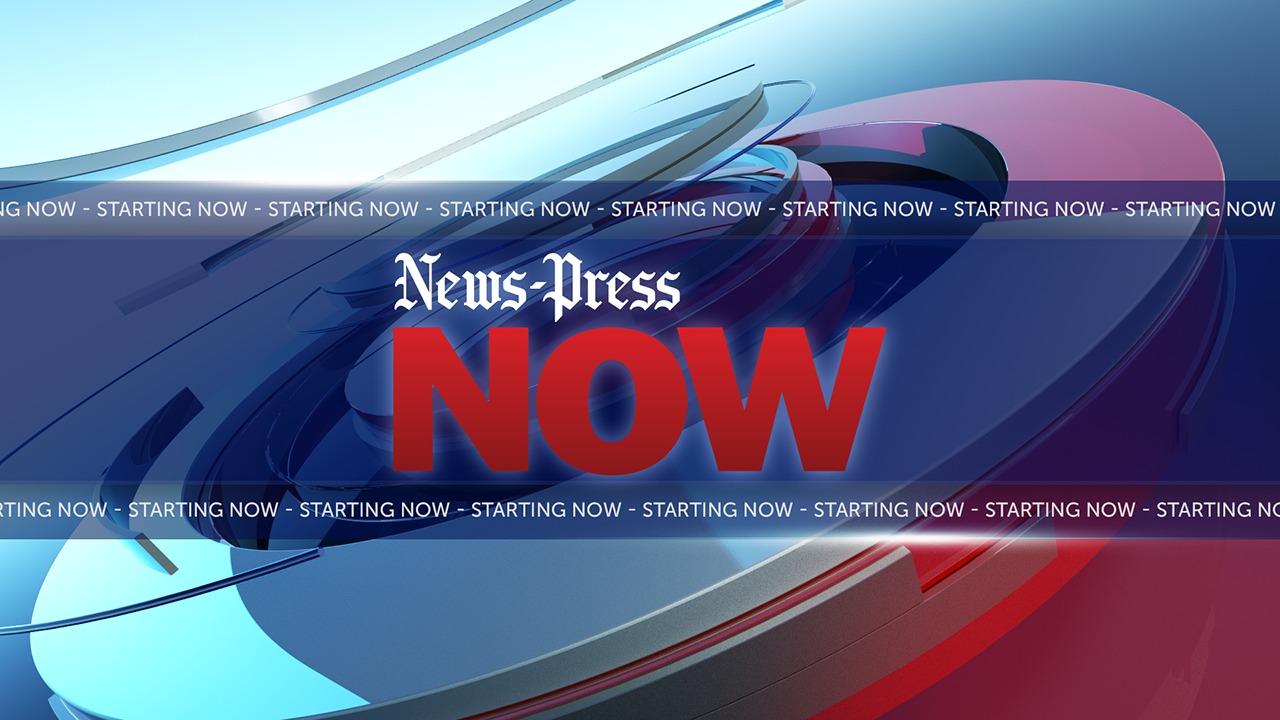Sports briefs
By NewsPress Now
Companies tighten security after health care CEO’s killing
“Wanted” posters with the names and faces of health care executives have been popping up on the streets of New York. Hit lists with images of bullets are circulating online with warnings that industry leaders should be afraid.
The apparent targeted killing of UnitedHealthcare CEO Brian Thompson and the menacing threats that followed have sent a shudder through corporate America and the health care industry in particular, leading to increased security for executives and some workers.
In the week since the brazen shooting, health insurers have removed information about their top executives from company websites, canceled in-person meetings with shareholders and advised all employees to work from home temporarily.
An internal New York Police Department bulletin warned this week that the online vitriol that followed the shooting could signal an immediate “elevated threat.”
Police fear that the Dec. 4 shooting could “inspire a variety of extremists and grievance-driven malicious actors to violence,” according to the bulletin, which was obtained by The Associated Press.
“Wanted” posters pasted to parking meters and construction site fences in Manhattan included photos of health care executives and the words “Deny, defend, depose” — similar to a phrase scrawled on bullets found near Thompson’s body and echoing those used by insurance industry critics.
Thompson’s wife, Paulette, told NBC News last week that he told her some people had been threatening him and suggested the threats may have involved issues with insurance coverage.
Investigators believe the shooting suspect, Luigi Mangione, may have been motivated by hostility toward health insurers. They are studying his writings about a previous back injury, and his disdain for corporate America and the U.S. health care system.
Mangione’s lawyer has cautioned against prejudging the case. Mangione, 26, has remained jailed in Pennsylvania, where he was arrested Monday. Manhattan prosecutors are working to bring him to New York to face a murder charge.
UnitedHealthcare’s parent company, UnitedHealth Group, said this week it was working with law enforcement to ensure a safe work environment and to reinforce security guidelines and building access policies, a spokesperson said.
The company has taken down photos, names and biographies for its top executives from its websites, a spokesperson said. Other organizations, including CVS, the parent company for insurance giant Aetna, have taken similar actions.
Government health insurance provider Centene Corp. has announced that its investor day will be held online, rather than in-person as originally planned. Medica, a Minnesota-based nonprofit health care firm, said last week it was temporarily closing its six offices for security reasons and would have its employees work from home.
Heightened security measures likely will make health care companies and their leaders more inaccessible to their policyholders, said former Cigna executive Wendell Potter.
“And understandably so, with this act of violence. There’s no assurance that this won’t happen again,” said Potter, who’s now an advocate for health care reform.
Private security firms and consultants have been in high demand, fielding calls almost immediately after the shooting from companies across a range of industries, including manufacturing and finance.
Companies have long faced security risks and grappled with how far to take precautions for high-profile executives. But these recent threats sparked by Thompson’s killing should not be ignored, said Dave Komendat, a former security chief for Boeing who now heads his own risk-management company.
“The tone and tenor is different. The social reaction to this tragedy is different. And so I think that people need to take this seriously,” Komendat said.
Just over a quarter of the companies in the Fortune 500 reported spending money to protect their CEOs and top executives. Of those, the median payment for personal security doubled over the last three years to just under $100,000.
Hours after the shooting, Komendat was on a call with dozens of chief security officers from big corporations, and there have been many similar meetings since, hosted by security groups or law enforcement agencies assessing the threats, he said.
“It just takes one person who is motivated by a poster — who may have experienced something in their life through one of these companies that was harmful,” Komendat said.
Head of the Federal Aviation Administration
to resign
The head of the Federal Aviation Administration, who has led a tougher enforcement policy against Boeing since a panel blew off a jetliner in January, said Thursday that he will step down next month, clearing the way for President-elect Donald Trump to name his choice to lead the agency.
Mike Whitaker announced his pending resignation in a message to employees of the FAA, which regulates airlines and aircraft manufacturers and manages the nation’s airspace. He became the agency’s administrator in October 2023.
Since then, the challenges confronting Whitaker have included a surge in close calls between planes, a need for stricter oversight of Boeing. antiquated equipment and a shortage of air traffic controllers at a time of high consumer demand for air travel.
“The United States is the safest and most complex airspace in the world, and that is because of your commitment to the safety of the flying public,” Whitaker said in the message to employees. “This has been the best and most challenging job of my career, and I wanted you to hear directly from me that my tenure will come to a close on January 20, 2025.”
Whitaker took the helm of the FAA after the Senate, which is frequently divided along partisan lines, voted 98-0 last year to confirm his selection by President Joe Biden. The agency had been without a Senate-confirmed chief for nearly 19 months, and a previous Biden nominee withdrew in the face of Republican opposition.
FAA administrators — who hold a job that has long been seen as nonpartisan — generally serve for five years, but that has not happened recently. Whitaker’s predecessor, Stephen Dickson, also stepped down early before fulfilling his term.
Whitaker worked as a lawyer for TWA and spent 15 years at United Airlines, where he oversaw international and regulatory affairs. He served as deputy FAA administrator during the Obama administration, and later as an executive for an air taxi company.
Less than three months into his tenure leading the FAA, a Boeing 737 Max lost a door-plug panel during an Alaska Airlines flight over Oregon, renewing safety concerns about the plane and the company. Whitaker grounded similar models and required Boeing to submit a plan for improving manufacturing quality and safety.
Whitaker said the FAA’s oversight of Boeing had been “too hands-off — too focused on paperwork audits and not focused enough on inspections.”
In August, the FAA said it had doubled its enforcement cases against Boeing since the January door-plug blowout.
Senators from both parties praised Whitaker on Thursday before a hearing on the FAA’s air traffic control system, which has been plagued by a shortage of controllers and old equipment. A computer system that offers safety information to pilots failed in January 2023, causing more than 1,300 flight cancellations and thousands of delays in a single day.
Sen. Ted Cruz, R-Texas, who led the opposition to Biden’s first pick to lead FAA, said the unanimous confirmation vote for Whitaker was a “testament to his experience, his judgement and his apolitical nature. He has ably led the agency during a challenging period.”
Sen. Tammy Duckworth, D-Ill., who heads the Senate aviation subcommittee, said Whitaker’s oversight of Boeing has been essential. “Our aviation system is safer because of his service,” she said.
Sen. Maria Cantwell, D-Wash., chair of the Senate Commerce Committee, which will consider Trump’s nominee to replace Whitaker, said the successor “needs to be ready on day one to continue the job of restoring the FAA’s safety culture and providing real oversight of the aviation sector.”
After Trump was elected president in 2016, he considered his personal pilot for the top FAA job before settling on Dickson, a former Delta Air Lines executive.
Trump’s choice this time could be affected by input from Tesla CEO Elon Musk, who has clashed with the FAA for slowing the Starship mega rocket developed by the billionaire’s SpaceX company. Musk, a huge campaign donor whom Trump named to lead an attempt to cut the size of government, has accused the FAA of being overly bureaucratic.
Average rate
on 30-year mortgage hits 6.6%
The average rate on a 30-year mortgage in the U.S. eased for the third week in a row, a welcome trend for prospective homebuyers during what’s typically a less competitive time of the year for the housing market.
The rate dropped to 6.6% from 6.69% last week, mortgage buyer Freddie Mac said Thursday. A year ago, the rate averaged 6.95%.
Borrowing costs on 15-year fixed-rate mortgages, popular with homeowners seeking to refinance their home loan to a lower rate, also eased this week. The average rate fell to 5.84% from 5.96% last week. A year ago, it averaged 6.38%, Freddie Mac said.
The average rate on a 30-year mortgage is now at its lowest level since Oct. 24, when it was at 6.54%.
“The combination of mortgage rate declines, firm consumer income growth and a bullish stock market have increased homebuyer demand in recent weeks,” said Sam Khater, Freddie Mac’s chief economist. “While the outlook for the housing market is improving, the improvement is limited given that homebuyers continue to face stiff affordability headwinds.”
Elevated mortgage rates and rising home prices have kept homeownership out of reach of many would-be homebuyers. U.S. home sales are on track for their worst year since 1995.
Mortgage rates are influenced by several factors, including the moves in the yield on U.S. 10-year Treasury bonds, which lenders use as a guide to price home loans.
The yield, which was below 3.7% as recently as September, has mostly hovered around 4.2% this month. It was at 4.3% at midday Thursday.
The recent decline in rates follows a mostly upward climb since the average rate on a 30-year mortgage slid to a two-year low of 6.08% in late September after the Federal Reserve cut its main interest rate from a two-decade high. While the central bank doesn’t set mortgage rates, its actions and the trajectory of inflation influence the moves in the 10-year Treasury yield.
Many economists and traders on Wall Street expect that the Fed will cut its main interest rate again at its policy meeting next week.
Home shoppers and homeowners seeking to refinance their existing mortgage to a lower rate are taking advantage of the recent pullback in home-loan borrowing costs. Mortgage applications rose 5.4% last week from a week earlier, the fifth straight increase, according to the Mortgage Bankers Association. Refinance loan applications climbed 27%.
“Purchase applications have increased on an annual basis every week except for one over the past three months, a positive sign for the mortgage market to close out this year,” said MBA CEO Bob Broeksmit.
With home prices near all-time highs and still rising nationally, albeit more slowly, many prospective homebuyers are likely holding out for mortgage rates to ease further in coming months.
But there may not be much relief, given that many housing economists predict the average rate on a 30-year mortgage will remain above 6% next year.
Applications for jobless benefits rise to highest level in two months
U.S. applications for unemployment benefits jumped to their highest level in two months last week but remain low relative to historical standards.
Jobless claim applications climbed by 17,000 to 242,000 for the week of Dec. 7, the Labor Department reported Thursday. That’s significantly more than the 220,000 analysts were forecasting and yet another data point that reflects a cooling labor market.
This week’s report also showed that continuing claims, the total number of Americans collecting jobless benefits, rose by 15,000 to 1.89 million for the week of Nov. 30.
The four-week average of weekly claims, which softens some of the week-to-week volatility, rose by nearly 6,000 to 224,250.
Weekly applications for jobless benefits are considered a proxy for U.S. layoffs.
While the job markets has shown some cracks recently, it remains broadly healthy and has held up better than many experts predicted considering that interest rates have been elevated in recent years. The Federal Reserve instituted a flurry of rate increases in 2022 and into 2023 to try to suppress the four-decade high inflation that took hold when the U.S. economy rebounded from the brief but sharp pandemic recession.
The Fed has cut its benchmark rate at its last two meetings in response to receding inflation, which has fallen close to the U.S. central bank’s 2% target from highs above 9%. The Fed is expected by most to issue another rate cut at its final 2024 meeting next week.
Last week, the government reported that U.S. job openings rebounded to 7.7 million in October from a 3 1/2 year low of 7.4 million in September, a sign that businesses are still seeking workers even though hiring has cooled.
In November, U.S. employers added a strong 227,000 jobs, following a paltry 36,000 in October, when the effects of strikes and hurricanes had sharply diminished employers’ payrolls. The government also revised up its estimate of job growth in September and October by a combined 56,000.
—From AP reports




